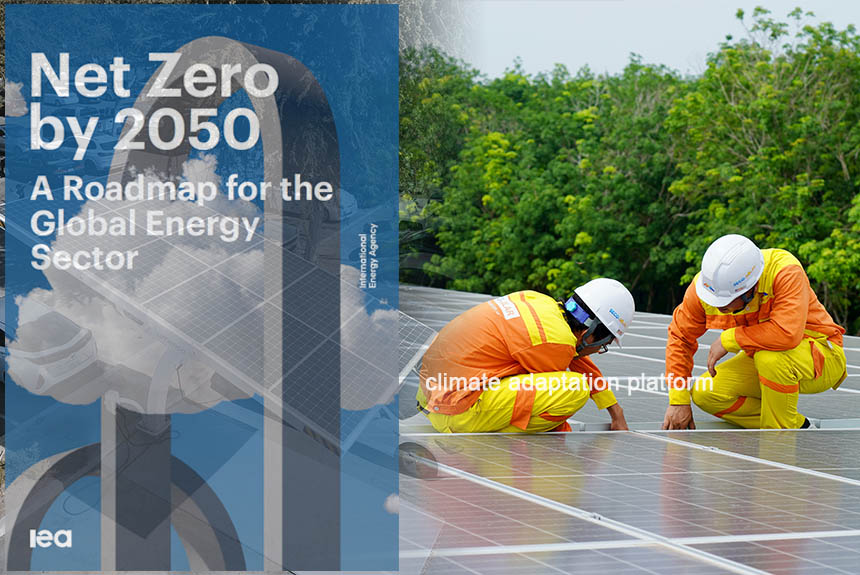The International Energy Agency published an update report released on September 2023. It updates the May 2021 Landmark report, which sets out a narrow but feasible pathway for the energy sector to contribute to limiting global warming to 1.5°C above pre-industrial levels. It noted that the pledges by governments as of 2021 fall short of what is required to reduce energy-related emissions by net zero by 2025.
The 2021 report is the world’s first comprehensive study of how to transition to a net zero energy system by 2050, ensuring affordable and accessible energy for all and economic growth. It has become an essential benchmark for policymakers, industry, the financial sector, and society.
The IEA shifted to a more optimistic tone in this year’s update. Since the previous report was released, many changes have occurred – Russia’s invasion of Ukraine triggered a worldwide energy crisis, and carbon emissions from the energy sector continued to rise, reaching a new high in 2022 at 37 billion tonnes, 1% above the pre-pandemic level. However, there have been positive trends in the deployment of clean energy in the last two years. The promising changes and actions that need to be ramped up are detailed in the 2023 update report.
The IEA represents countries that comprise more than 80% of global energy consumption. The 2023 update projects demand for coal, oil, and natural gas will peak before 2030. While GHG emissions keep rising, the agency finds that there is still a pathway to reaching net zero by 2050 and limiting temperature rise to 1.5°C.
Key findings of the 2023 update include:
- Positive developments in the last two years in solar PV installations and electric car sales are tracking in line with the milestones set out for them in our 2021 Net Zero by 2050 report.
- Ramping renewables, improving energy efficiency, cutting methane emissions, and increasing electrification with technologies available today deliver more than 80% of the emissions reductions needed by 2030.
- Renewables and efficiency are vital in driving fossil fuel demand down. Tripling global installed renewables capacity to 11,000 gigawatts by 2030 provides the largest emissions reductions to 2030 in the Net Zero Emission by 2050 (NZE) Scenario. Doubling the energy efficiency of equipment such as electric motors and air conditioners; switching to more efficient fuels, electricity, and clean cooking solutions in low-income countries, and using energy and materials more efficiently saves the energy equivalent of all oil consumption in road transport today, reduces emissions, boosts energy security, and improves affordability.
- Booming technologies like electric vehicles and heat pumps drive electrification across the energy system, providing nearly one-fifth of the emissions reductions to 2030 in the NZE Scenario.
There is more work that needs to be done.
Despite these positive trends, more must be done, especially on infrastructure. The report says these will require extensive new, more innovative and repurposed infrastructure networks; large quantities of low-emissions fuels; carbon capture technologies from smokestacks and the atmosphere; more nuclear power; and large land areas for renewables. Electricity transmission and distribution grids must expand by around 2 million kilometres annually by 2030.
IEA’s 2023 Net Zero Roadmap report outlines a route to net zero emissions for the global energy sector by 2050. Still, it recognises the importance of fostering an equitable transition that considers different national circumstances.
“Keeping alive the goal of limiting global warming to 1.5 °C requires the world to come together quickly. The good news is we know what we need to do – and how to do it. Our 2023 Net Zero Roadmap, based on the latest data and analysis, shows a path forward,” said IEA Executive Director Fatih Birol. “But we also have a very clear message: Strong international cooperation is crucial to success. Governments need to separate climate from geopolitics, given the scale of the challenge at hand.”
The report highlights the importance of strengthening international cooperation to meet the 1.5 °C temperature limit. It warns that failure to ramp up ambition between now and 2030 will lead to more climate risks and make us more dependent on expensive carbon removal technologies.
Sources:
Net Zero by 2050. A Roadmap for the Global Energy Sector. (2021 May). IEA. Retrieved from https://www.iea.org/reports/net-zero-by-2050
The path to limiting global warming to 1.5 °C has narrowed, but clean energy growth is keeping it open. (2023, September 26). IEA. Retrieved from https://www.iea.org/news/the-path-to-limiting-global-warming-to-1-5-c-has-narrowed-but-clean-energy-growth-is-keeping-it-open
Net Zero Roadmap: A Global Pathway to Keep the 1.5°C Goal in Reach. Executive summary. (2023). IEA. Retrieved from https://www.iea.org/reports/net-zero-roadmap-a-global-pathway-to-keep-the-15-0c-goal-in-reach/executive-summary



Leave a Reply